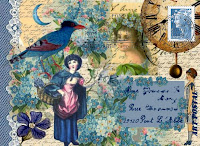I like Rebecca Belmore's work so much. I looked her up the other day and watched all of her performance videos, and today I took a look at some of her sculpture, and photography and other 2D work. The way I respond to it might be due partially to my interest in Aboriginal issues, but I also think she's just really good at what she does. With art, I find that there will be certain pieces of art work or certain artists that will jump out at you or touch you, often because it manages to hit something personal for you. When it comes to the majority of art, though--at least, in my experience--you have to take a moment to seriously consider a piece, and think about what it's trying to do before you really feel it's effect. That's not a bad thing, and in my opinion, all art--or anything that has the potential to be art--merits that moment of consideration. I really feel that with Blackmore's work would be able to instantly resonate with many people, regardless of their education, interests, or political views. This, I think is due for the most part to the raw emotion that she seems to funnel into her work, especially her performances. Obviously performance art, as with all art needs a certain amount of planning or careful thinking (even if it means planning not to think when it comes time to create the work). When watching Blackmore's performances, it seemed almost she didn't do this, like in her grief and rage she just went out onto the Vancouver street and started performing Vigil, or went out next to the river and began Bury My Heart. I guess what I'm trying to say is that the grief and anger of the Aboriginal community over shameful events such as those at Wounded Knee, or the apathy about the murders of all those Aboriginal women on the streets of Vancouver, and many other events like those. She's also just really good at yelling.
"Rebecca Belmore." Rebecca Belmore. Department of Canadian Heritage, n.d. Web. 24 Mar. 2013. <http://www.rebeccabelmore.com/>.
"Rebecca Belmore: Visual Artist." Canada Council for the Arts. Canada Council for the Arts, 12 Mar. 2013. Web. <http://ggavma.canadacouncil.ca/en/Archive/2013/Winners/RebeccaBelmore.aspx>
"Rebecca Belmore." Rebecca Belmore. Department of Canadian Heritage, n.d. Web. 24 Mar. 2013. <http://www.rebeccabelmore.com/>.
"Rebecca Belmore: Visual Artist." Canada Council for the Arts. Canada Council for the Arts, 12 Mar. 2013. Web. <http://ggavma.canadacouncil.ca/en/Archive/2013/Winners/RebeccaBelmore.aspx>


